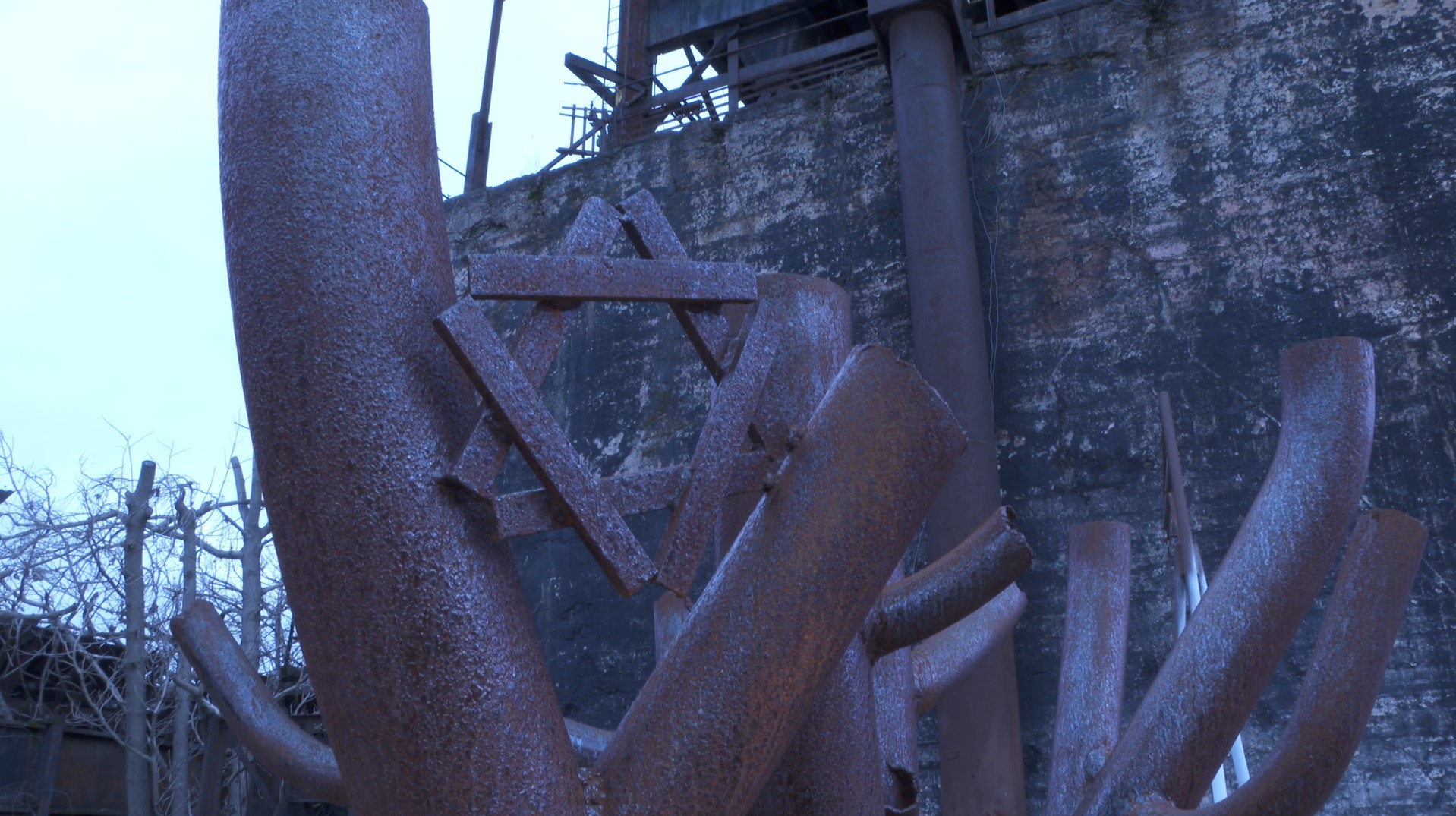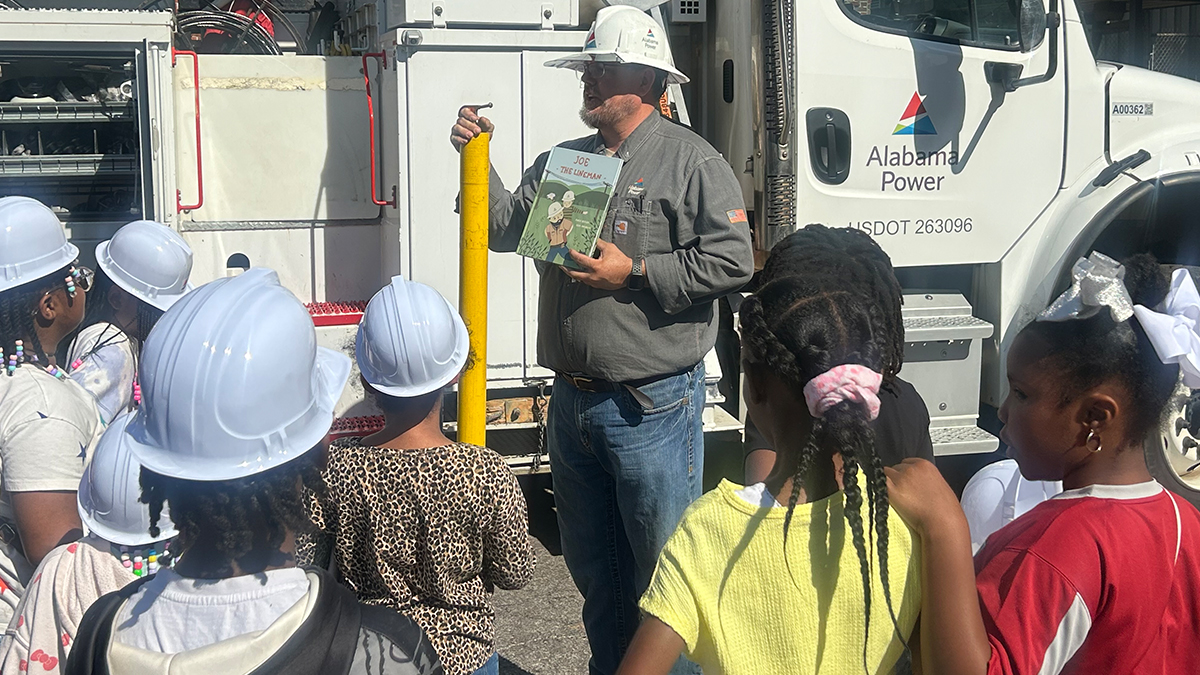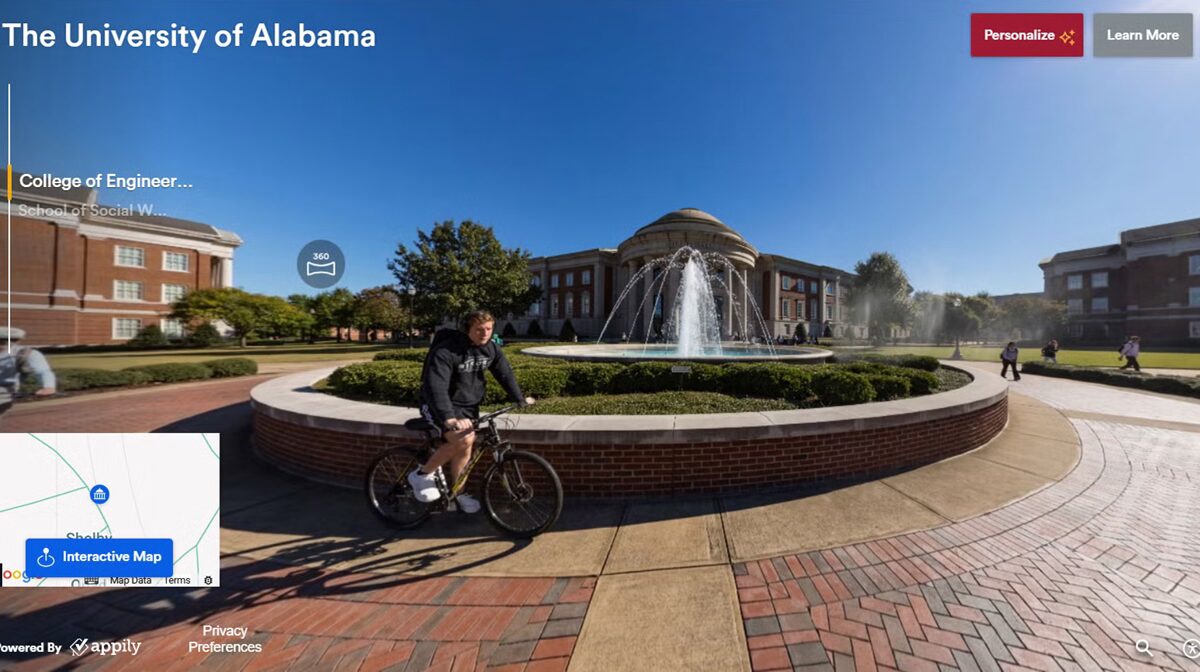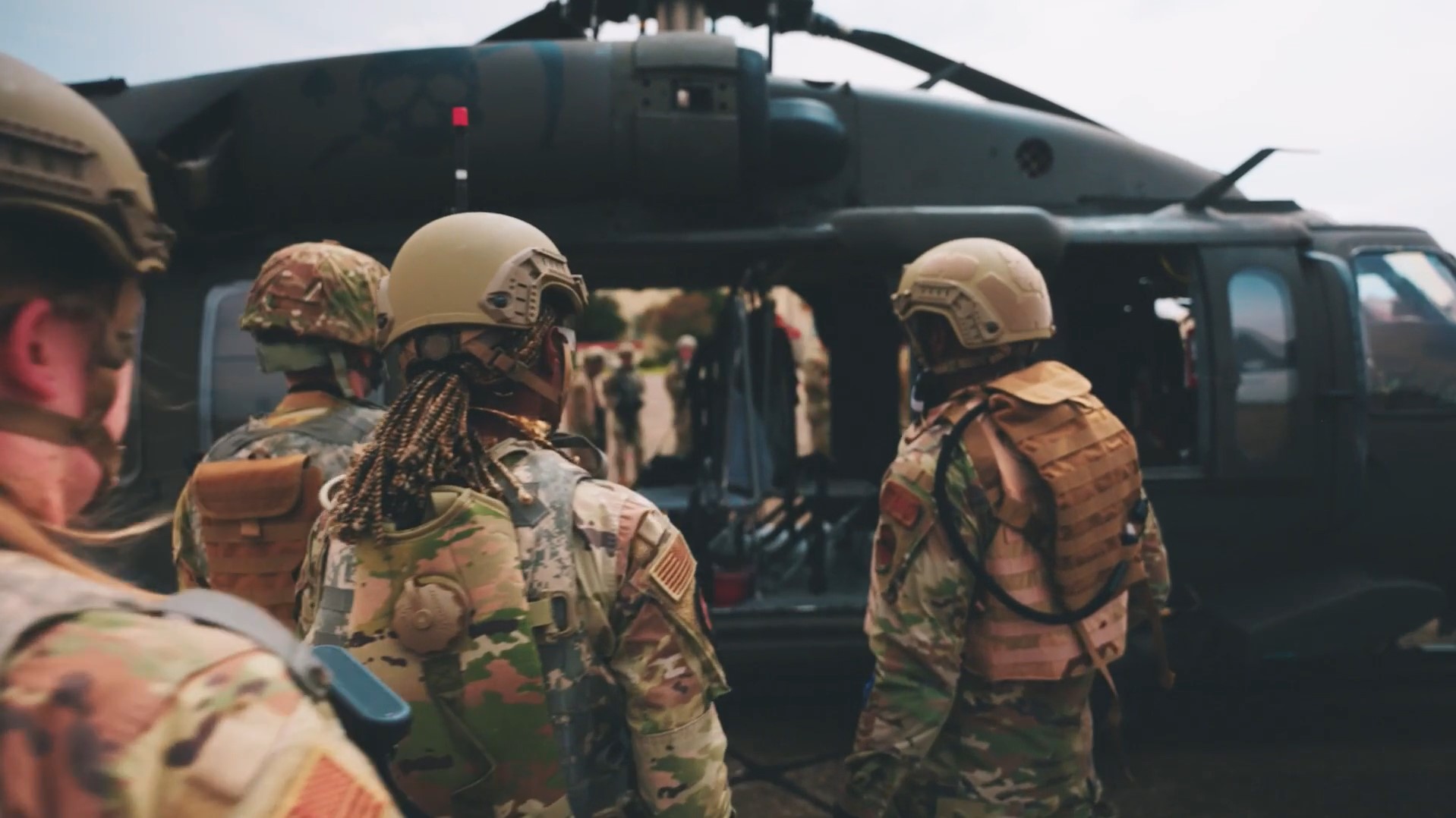Archaeologists abuzz about Spanish artifacts uncovered in west Alabama

From left, Ashley Dumas, associate professor of anthropology at the University of West Alabama; UWA student Beth Lundgren, and Jim Knight, a retired University of Alabama professor of anthropology, excavate a 16th-century site in West Alabama. (contributed)
For more than a century, historians, archaeologists and anthropologists have scoured areas of west Alabama in search of the remains of Mabila – a fortified Indian village where, in October 1540, the forces of notorious Spanish conquistador Hernando de Soto clashed with Native American warriors under the direction of their dynamic leader, Chief Tascalusa.
The massacre, which included the torching of the village and its wooden palisades, left as many as 6,000 Native Americans dead, including women and children. About 20 Spaniards were killed and 250 wounded, according to one account, out of an expeditionary force of around 600.
If those numbers are accurate, it ranks the Battle of Mabila among the bloodiest days of combat on North American soil – comparable to, or greater than, the death toll recorded at Antietam during the Civil War, when more than 3,600 Union and Confederate soldiers perished in a single day.
Now, nearly 500 years after the battle, a surprisingly swift series of events has brought the world a step nearer pinpointing the important battle site.

Artwork depicting Hernando de Soto and his men burning the Native American village of Mabila in 1540. Archaeologists may be getting closer to identifying the west Alabama location of the battle, possibly the bloodiest ever fought on North American soil. (Herb Roe, Wikipedia)
A detailed examination of Spanish and Native American artifacts recently unearthed in Marengo and Hale counties has experts convinced they’ve located the province of Mabila, which means they may be close to zeroing in on the spot where the clash between De Soto and Tascalusa took place.
“I think we are within several miles of the battle site,” said Ashley Dumas, associate professor of anthropology at the University of West Alabama (UWA).
“We’re very excited. It’s been a big team effort,” said Dumas, the principal investigator coordinating the latest research. “Actually, we really were surprised.”
Surprised, because the artifacts were discovered where many hadn’t thought to look before: in the higher, drier farm fields of Alabama’s Black Belt. For decades, experts focused their search for Mabila in west Alabama’s river valleys.
Also surprising was the sheer richness of the recent finds, said Jim Knight, a retired University of Alabama professor of anthropology and editor of “The Search for Mabila,” a 269-page volume about the enduring quest, published by the University of Alabama Press. The book compiles articles by scholars who gathered at the university in 2006 to compare notes and theories about Mabila’s location.
In three weeks of searching this summer, an expert team, plus volunteers and UWA students, unearthed more than 50 pieces of medieval Spanish metal – an unheard-of amount compared to past finds in Alabama.
“In a couple of weeks’ time, we doubled the number of Spanish horseshoes found to date in the entire Southeast,” said Knight, who is actively participating in the research.
Also surprising are what the findings suggest about the natives’ living habits in the mid-16th century, when they first made contact with Europeans.
Using GPS technology, researchers have plotted the results of more than two years of work and study, including findings from three brief digs that uncovered native pottery sherds; organic material, such as burnt wood and seeds, that can be radiocarbon dated; and Spanish metal.
Charted on a map, the results show a native settlement area of more than 140 farmsteads that were active almost 500 years ago – each less than 1 acre and “within one or two crossbow shots” of each other, Dumas said.
The use of crossbow shots isn’t just Dumas being clever with language; it comes from a description in one of four historic chronicles of the journey – three written by members of De Soto’s expedition and a fourth written later, based on interviews with some of De Soto’s men. In other words, the work of Dumas and the UWA team validates a nearly 500-year-old observation recorded by De Soto’s party that had not been confirmed before.
The results provide new evidence that the natives of that time had spread themselves out into small farming communities, a departure from the more densely populated river valley towns built around ceremonial mounds where they had lived for centuries before – towns like the one at what is now Moundville Archaeological Park, south of Tuscaloosa. The mounds at that site were built between the 12th and 14th centuries, according to historians.
Switching up the search
Dumas said most experts have searched in vain for Mabila in the river valleys, and for good reason, since that’s where the larger native towns were during the Mississippian Period, which extended from around 800 A.D. to about 1600, depending on the region. Those riverside communities made sense, because it was where the most fertile soil for farming was located, as well as access for fishing, travel and trade. The Alabama Power Foundation has helped support some of the research.
New findings show that, by the mid-1500s, natives were living and farming in drier locations, farther from the rivers, and that they had contact with the Spanish explorers traveling west toward what is now the state of Mississippi. Some of the recently unearthed metal has been identified as pieces of Spanish barrel straps that were reforged into chisels and adzes, a tool similar to an axe, which were used by the Spanish for trade with the native farmers. Native Americans in the mid-16th century did not possess the technology to forge their own metal tools.
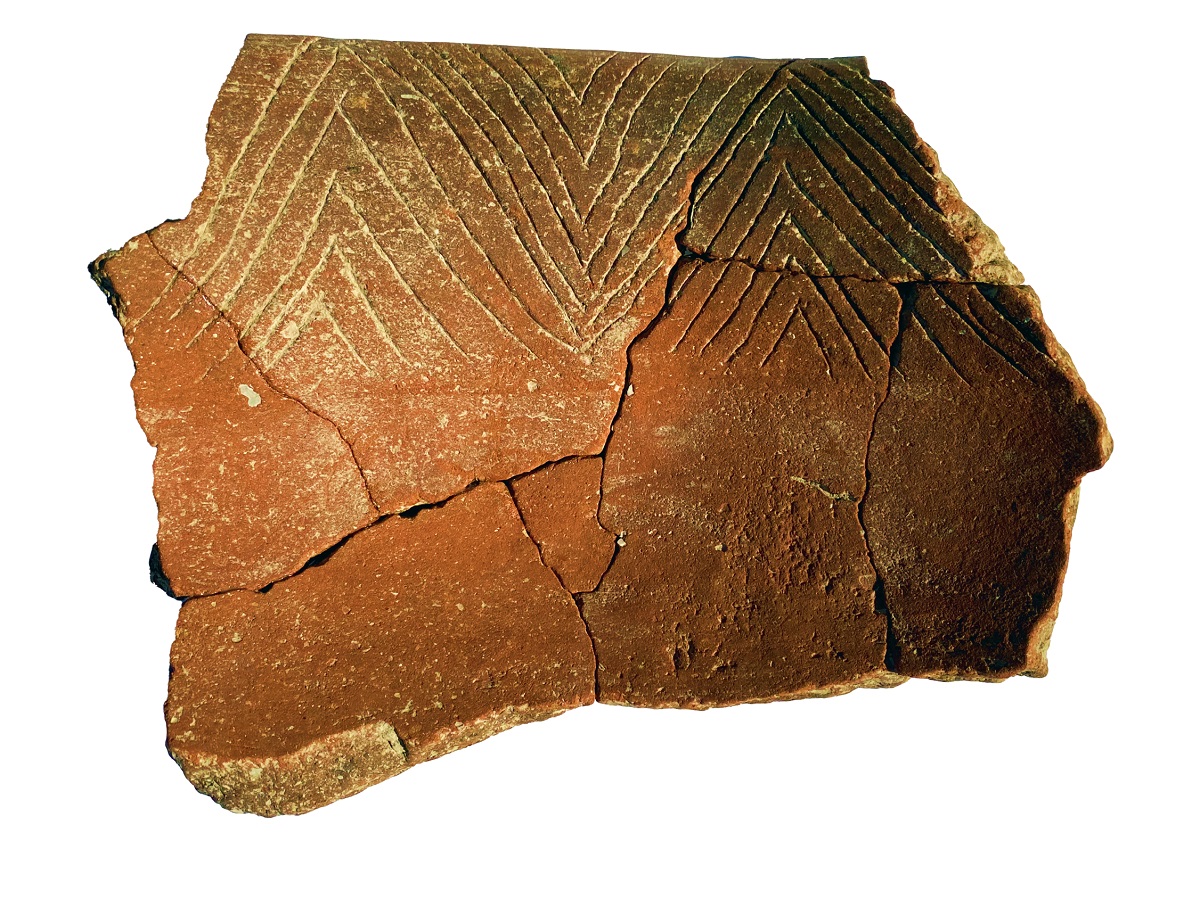
Fragments of a bowl with markings typical of 16th-century Alabama indigenous people. (contributed)
“I think that one obstacle that prejudiced our vision before was that the black prairie couldn’t be farmed with traditional hoe-farming techniques,” Dumas said, noting that this is the same land where enslaved Blacks toiled in the 19th century to raise cotton and other crops with metal plows, forged tools and livestock. Native Americans in the 1500s, in contrast, would have farmed primarily with implements fashioned from wood, stone and animal bone.
Dumas said many assertions in the historic De Soto chronicles aren’t reliable. On the other hand, “If we instead begin to trust some of these descriptions, they do begin to line up,” she said.
“This is such a significant find,” Dumas said of the Spanish metal and 16thcentury pottery recently uncovered – and their implications. She said the team “held off on our enthusiasm” until the artifacts could be definitively confirmed as dating to the time when DeSoto was traveling through the region.
Among the scholars who have helped with the identification of the Spanish artifacts is Charles Cobb, professor of historical archaeology at the Florida Museum of Natural History and an expert in 16th century artifacts and European-native encounters. Experts at Mississippi State University who are familiar with Spanish-native interaction at sites in that state also have supported the team’s work.
Cobb agrees that the recent finds have put archaeologists “hot on the trail” toward Mabila and the site of the horrific battle, which he described as “one of the most significant events in 16th-century colonial history in the American Southeast.”
Cobb added, “The metal artifacts recovered in Marengo and Hale counties are the tangible remains of first contact between Spaniards and native peoples in the region, and evidence of the cultural exchange that would come to define the American experience.”
A boon for the Black Belt?
Dumas said it’s particularly gratifying that UWA and its students played a pivotal role in recent discoveries, with perhaps more discoveries to come soon. “Ninety percent of the work has been done by volunteers and students,” she said.
“It’s been really important to have this Black Belt project led by a Black Belt university,” Dumas said. “It’s just really important for our students, for our region. I hope people appreciate it.”
Indeed, finally finding Mabila could have significant, positive implications for the Black Belt region, from drawing more scholars and research dollars, to sparking additional tourism and more traditional economic development.
“People have been looking for Mabila for over a century,” Dumas said. “It’s as important as Jamestown or St. Augustine in the development of our history.”
Dumas and Knight are confident that, with additional research and digging, the battle site will be identified.
“It’s one of those rare, TV moments,” Dumas said of the sudden speed of the recent discoveries. “It doesn’t often happen this way. It was a remarkable moment in archaeology, a remarkable moment for me.”
As devastating as the Battle of Mabila was for the native people, it also was damaging to De Soto’s expedition. Much of the Spanish force’s supplies were depleted in the epic clash, including the loss of valuable horses. After recovering for a few weeks at the site, the weakened Spanish moved west. They would later cross the Mississippi River – the first Europeans to do so – and press on into what is now Arkansas and Texas. Subsequent clashes with native people further weakened the Spanish. In May 1542, De Soto died of a fever along the banks of the Mississippi; historians debate whether it was in present-day Mississippi or Louisiana. The remaining men eventually made their way back to Mexico.
Dumas said she especially appreciates the private landowners in Marengo and Hale counties who agreed to allow in the researchers for exploration. She and the team are hoping another expedition in the spring of 2022 will bring the team even closer to solving one of the great archaeological mysteries of pre-colonial America. Or maybe solving it once and for all.
“We really have not had a ton of time in the field. That’s another reason we are so excited. We’ve covered so little ground – and to find so much, it’s super exciting.”








